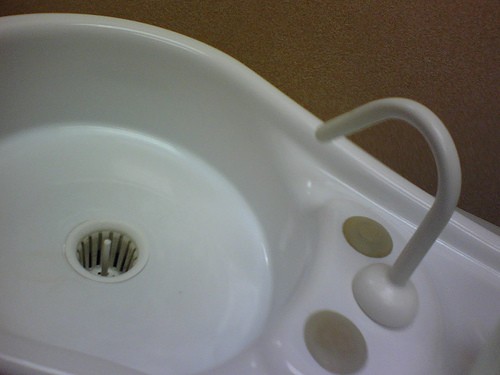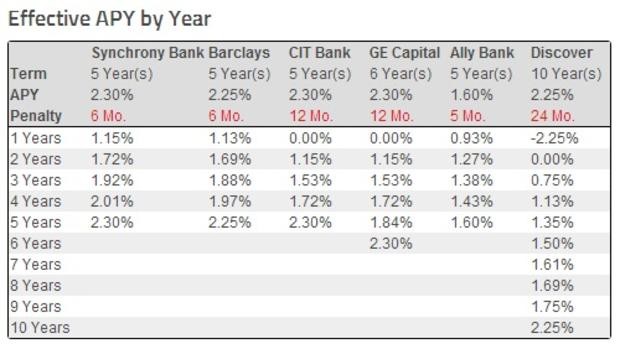With Rates So Low Where To Put Your Cash CBS News
Post on: 24 Май, 2015 No Comment

Life without inflation is easier on consumers, taming prices on everything from food and lodging to clothing and heating fuel. It sure can make it tough to find a decent rate of return on their cash, though.
That challenge just got prolonged with the Federal Reserve’s announcement last week that it intends to hold interest rates at a record low for an extended period.
While the Fed’s decision strengthens prospects for the economy, it means yields from CDs as well as savings and money-market accounts at banks will remain minuscule, leaving people in a quandary over where to put their money.
Beyond their retirement accounts, that’s usually the first question we get from clients these days, says Michael Berardi, managing partner of Boston Hill Advisors in North Andover, Mass. ‘What do I do with my cash?’
The short answer: Don’t expect much for now from those traditional cash deposits.
Even the best rates for one-year CDs are currently under 2 percent, and savings accounts and money-market bank accounts are no better, often below 1 percent.
Money-market mutual funds, which typically earn higher interest than money in bank accounts, are faring even worse, with an average 12-month total return of 0.25 percent, according to mutual fund data provider iMoneyNet. That’s an all-time low.
Rates of return won’t improve appreciably until the Fed starts to lift short-term interest rates, and pundits don’t see that happening until late 2010 or early 2011.
So if rates aren’t going to go up for an entire year, what should you be doing?
There’s no one-size-fits-all solution — it depends on your circumstances. Proceed cautiously before adding risk to your bread-and-butter savings, however.
Here are some key points to keep in mind in the quest for palatable rates:
1. Keep low rates in perspective: Savers may be tempted to look back longingly on the days when having money sit in the bank and grow could be rewarding. As recently as the summer of 2008, just before the financial crisis hit full-force, you could earn 5 percent on the best-yielding savings accounts.
What can easily be overlooked is that inflation reached 5 1/2 percent at the same time, so they could actually have been losing money despite those fat yields.
Today’s paltry rates at least beat inflation of virtually zero, albeit barely.
In terms of buying power, you’re actually doing better now than you were a year and a half ago even though it doesn’t feel like it, says Greg McBride, senior financial analyst at Bankrate.com, which provides data on the latest bank interest rates.
2. Think short-term. Part of staying patient on rates means not trying to generate more interest income by looking at maturities of longer than one year on CDs or other fixed-rate products. The rate boost you’ll get will be minimal and you’ll still be locking in a small rate of return.
Keeping maturities to no more than a year will give you the flexibility to reinvest at higher rates of return once interest rates pick up.
3. Consider alternatives: While there’s no sure-fire way to get great rates, think about alternatives such as bond funds.
Some financial planners are steering their clients into short-term investment-grade bond funds. These funds invest in short-term (due in nine months or less) debt instruments rated BBB or higher by Standard & Poor’s or Baa or better by Moody’s.

They are riskier than money-market bank accounts in that they are not insured by the Federal Deposit Insurance Corp. But they are still comparatively safe and offer a way to get 2 percent-plus in interest.
We don’t recommend replacing all your cash with bonds, says Berardi. But in this low-interest environment, short-term bond funds are a great way to get some enhanced yield.
4. Don’t neglect savings funds because of poor rates. Be sure to keep pumping money into some kind of cash account regardless of what it’s earning. In an era of frequent layoffs and economic uncertainty, it’s more important than ever to aim to build up at least six months’ emergency expenses in readily available cash.
If the return is only 1 percent, it still beats more debt.
Avoid the temptation, too, to steer money away from cash accounts and into stocks or commodities that offer the possibility of greater returns. That’s a risk best avoided with savings you might need to tap in the near future.
5. Keep an eye on inflation: Despite widespread talk that a return to higher inflation is coming, it doesn’t appear imminent. But investors need to remain watchful because of a growing federal deficit that makes it a strong possibility at some point.
When inflation does rebound, McBride says, it will probably happen faster than most of your investments can keep up. So in addition to staying in short-term maturities, you need to be poised to reinvest at higher rates once inflation accelerates.
To be fully prepared, you may want to consider buying Treasury Inflation-Protected Securities, or TIPS, a common hedge against rising prices. The face value on TIPS is adjusted every six months to keep pace with inflation. So interest payments and the principal both will climb as inflation rises.
Terms of five, 10 and 20 years mean you won’t be able to nimbly shift the money into investments with better yields when rates climb. But they will safeguard you against the ravages of higher inflation.
2009 The Associated Press. All Rights Reserved. This material may not be published, broadcast, rewritten, or redistributed.














